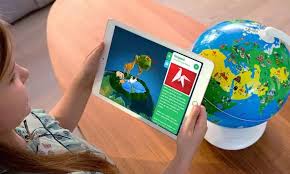Augmented Reality: Revolutionizing Language Learning
AR for Language Learning
Augmented reality (AR) is changing the way we learn languages. By overlaying digital information onto the real world, AR creates interactive and immersive learning experiences that can significantly enhance our language skills.
Augmented Reality: Revolutionizing Language Learning
Augmented reality (AR) is changing the way we learn languages. By overlaying digital information onto the real world, AR creates interactive and immersive learning experiences that can significantly enhance our language skills.
AR for Language Learning
AR has the potential to transform language learning by providing learners with engaging and interactive experiences. Here are some ways AR is being used to enhance language learning:
Interactive Language Experiences
AR applications can create interactive language learning experiences that go beyond traditional textbooks and online courses. For example, AR apps can:
- Allow users to interact with virtual characters in real-world settings, practicing their language skills in realistic scenarios.
- Provide interactive flashcards and games that use augmented reality to make learning more engaging and fun.
- Turn real-world objects into learning tools. For example, users can point their smartphone camera at a chair and see a digital label with the word for “chair” in the target language.
Enhanced Learning
AR can enhance language learning by:
- Making learning more immersive and engaging. AR apps can transport learners to virtual environments where they can practice their language skills in a variety of situations. This immersive learning can make language acquisition more enjoyable and effective.
- Providing personalized learning experiences. AR apps can track learners’ progress and adjust the difficulty of exercises based on their individual needs. This personalized approach can help learners learn at their own pace and focus on areas where they need the most improvement.
- Enhancing vocabulary and grammar learning. AR apps can use visual and audio cues to help learners understand new vocabulary and grammar concepts.
- Facilitating real-world practice. AR apps can provide opportunities for learners to practice their language skills in real-world situations. For example, users can use an AR app to order food in a restaurant or ask for directions in a foreign city.
AR is a powerful tool for language learning, offering a variety of benefits for learners of all ages and levels. As AR technology continues to evolve, we can expect to see even more innovative and effective language learning applications emerge.
Summary
- AR creates interactive language learning experiences.
- AR makes learning more immersive and engaging.
- AR provides personalized learning experiences.
- AR enhances vocabulary and grammar learning.
- AR facilitates real-world practice.
